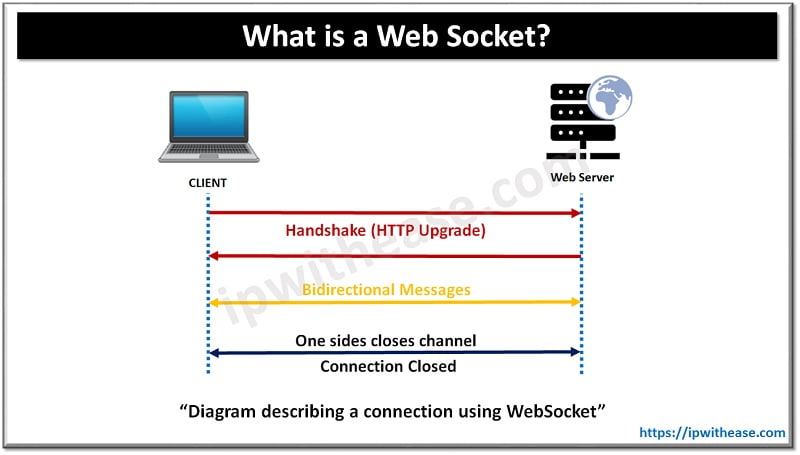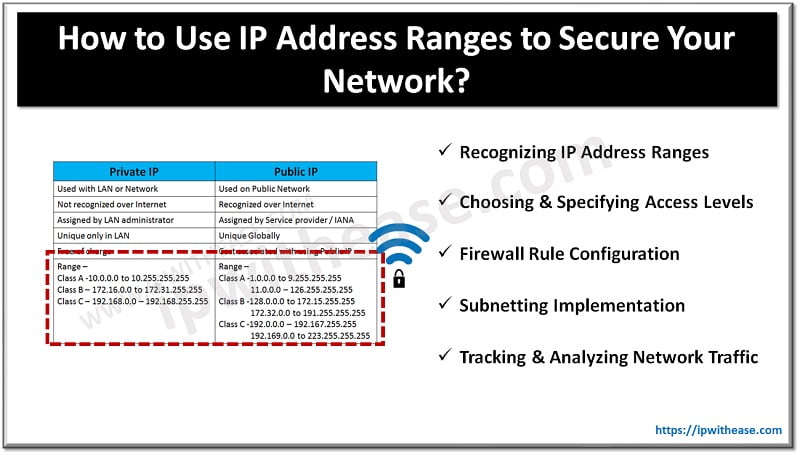Introduction to WebSocket
In the IT community, the term WebSocket is defined as a computer telecommunication protocol that provides a full duplex (both way) telecommunication channel over a common TCP connection session. Historically, the Web Socket protocol was certified by the IETF organization using the name RFC 6455 in late 2011 and in a similar way, the Web Socket API included in Web IDL implementation, is being certified by the W3C organization.

Web Socket Protocol
Although the Web Socket protocol looks similar to HTTP, they also have many differences.
- First of all, both protocols can be found at layer 7 OSI model and both are depending on the TCP architecture at layer 4 model.
- They are also different because RFC 6455 is declaring that the Web Socket protocol is particularly designed to be utilized over HTTP ports (443 and 80).
- It is also being set to support HTTP proxies and in-between servers, making it a compatible choice with the HTTP protocol. In order to accomplish 100% compatibility, the Web Socket hand-shake is utilizing the HTTP Upgrade header, so it can be ready to interchange from HTTP protocol to a Web Socket protocol.
- In addition, the Web Socket protocol is able to create interactions between an internet explorer (or similar client type applications) and web servers, maintaining a lower overhead compared to the semi duplex alternatives that HTTP polling is usually offering, resulting in a real-time data interconnection in-between the server and the client.
How does a WebSocket works?
In order to achieve this condition-state, it has to provide a systematized way for the server to transmit contents to the client terminal without any specific request by the client. It also needs to allow messages to be sent back and forward while keeping the connection session alive. In this particular way, a both-way communication can be created between the client and the server.
Now, regarding the transmission protocol ports, the options are the TCP port number 443 (or 80 in case of using an unsecured connection), which is best used for environments that usually block non-web Internet connections, by using a firewall. In a very similar two-way browser-server communication system, engineers have managed to stop using gap technologies such as Comet or Adobe Flash Player.
Furthermore, the Web Socket Protocol is also compatible with many famous internet browsers, including Firefox, Chrome, Edge, Internet Explorer, Opera and Safari.
Why WebSocket protocol is preferred?
- Despite the HTTP, the Web Socket protocol is preferred because:
- It provides full-duplex communication.
- Furthermore, the Web Socket protocol enables streaming of messages on top of the TCP layer. Meaning that the TCP layer has to deal with streaming of data bytes without the inherent concept of a common message.
- In the past, Web Socket protocol always used port 80 full-duplex communication with Comet channels solutions. However, Comet implementation is a non-trivial solution and also because the TCP protocol is handshaking and finally HTTP is over heading, they are not enough to include small packet messages. This is why the Web Socket protocol is introduced to solve all these problems, without compromising security.
“Web Socket” and “Web Socket Secure”
Finally, the Web Socket protocol specifications are also defined as “Web Socket” and “Web Socket Secure” in the IT community, because the two-new uniform resources identifier (URI) schemes are mainly used for un-encrypted and encrypted sessions. Despite the fact that the common scheme is used with name and fragment syntax (# is not compatible), the rest of the URI components are defined to use URI generic syntax.
Conclusion
Hopefully, we helped the readers to understand the main principles of the Web Socket and the basic differences with HTTP. Although, the main benefit is full duplex communication, many organizations rely on HTTP nowadays, without knowing the advantages of the Web Socket protocol.
We also discussed how the Web Socket protocol works and the architecture that is included in different examples. We might see in the future, new protocols that will support different ports (not only 80 and 443), giving a wider network compatibility.
Also, we all hope for new research based projects from International Organizations to be funded, giving opportunities to scientists and engineers to develop new technologies.
Continue Reading:
SNMP – Simple Network Management Protocol
ABOUT THE AUTHOR

You can learn more about her on her linkedin profile – Rashmi Bhardwaj



